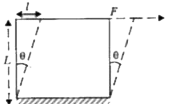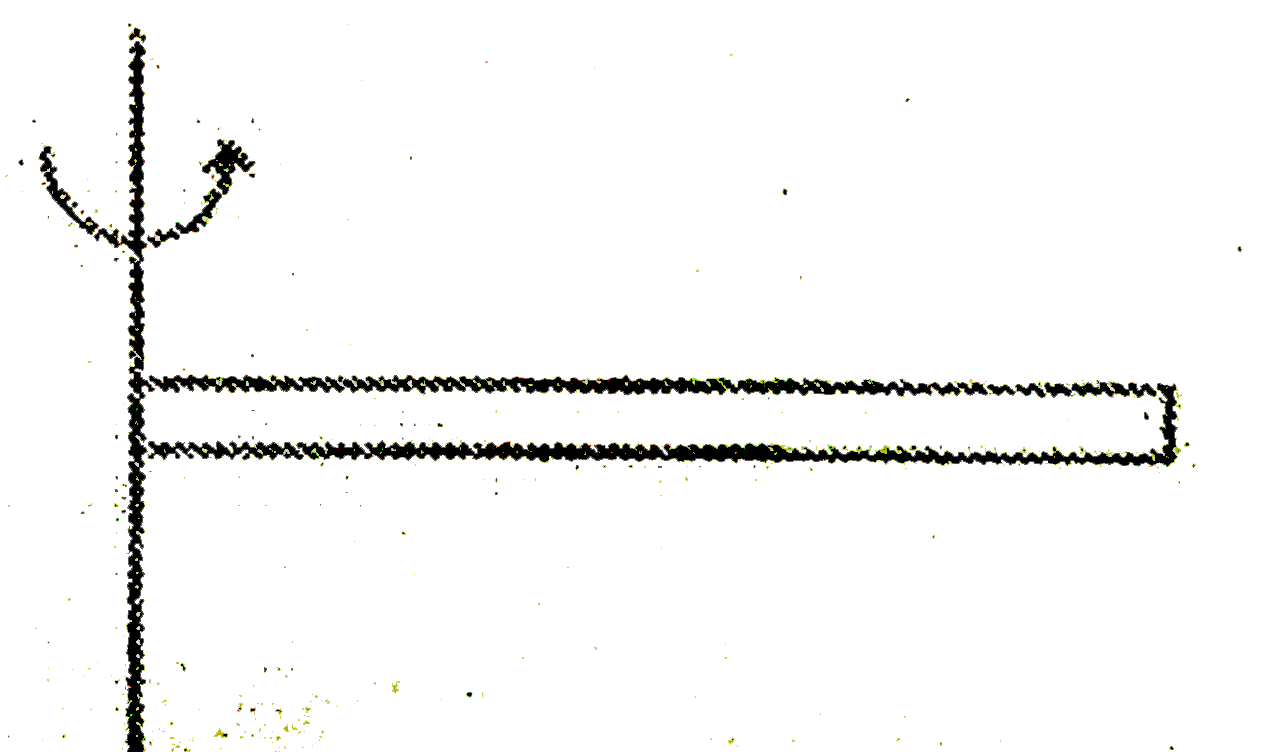A cube of metal is subjected to a hydrostatic pressure of 4 Gpa. The percentage change in the length of the side of the cube is close to :
(Given bulk modulus of metal, B=8×1010Pa)
20
0.6
1.67
5
To solve the problem, we need to determine the percentage change in the length of the side of a cube of metal subjected to a hydrostatic pressure of 4 GPa, given the bulk modulus B=8×1010 Pa.
1. Understanding the relationship between pressure, bulk modulus, and volume change:
The relationship between pressure P, bulk modulus B, and the fractional change in volume ΔVV is given by:
P=−BΔVV
Rearranging this gives:
ΔVV=−PB
2. Substituting the values:
Here, P=4GPa=4×109Pa and B=8×1010Pa. Substituting these values into the equation:
ΔVV=−4×1098×1010=−480=−120
3. Relating volume change to length change:
The volume V of a cube with side length a is given by:
V=a3
The fractional change in volume can be related to the fractional change in length using:
ΔVV=3Δaa
Therefore, we can write:
3Δaa=−120
4. Solving for the fractional change in length:
Rearranging gives:
Δaa=−160
5. Calculating the percentage change in length:
The percentage change in length is then:
Percentage change=Δaa×100=−160×100=−10060=−53≈−1.67%
6. Final answer:
The percentage change in the length of the side of the cube is approximately −1.67%.
Conclusion:
The correct answer is 53% (as a positive value, indicating a decrease in length).
The relationship between pressure P, bulk modulus B, and the fractional change in volume ΔVV is given by:
P=−BΔVV
Rearranging this gives:
ΔVV=−PB
Here, P=4GPa=4×109Pa and B=8×1010Pa. Substituting these values into the equation:
ΔVV=−4×1098×1010=−480=−120
The volume V of a cube with side length a is given by:
V=a3
The fractional change in volume can be related to the fractional change in length using:
ΔVV=3Δaa
Therefore, we can write:
3Δaa=−120
Rearranging gives:
Δaa=−160
The percentage change in length is then:
Percentage change=Δaa×100=−160×100=−10060=−53≈−1.67%
The percentage change in the length of the side of the cube is approximately −1.67%.
The correct answer is 53% (as a positive value, indicating a decrease in length).
Topper's Solved these Questions
Similar Questions
A metal cube of side 20cm is subjected to a shearing force of 4000N. The top face is displaced through 0.50 cm with respect to the bottom. Find the rigidity modulus of the metal.

View SolutionA thin rod of length 3 m is being rotated with 10 rad/sec about its one end. The change in length of the rod due to rotation is (Given : Young's modulus of elasticity of the wire, Y=3×108SI unit, density of the rod is 104 Unit)

View Solution
Knowledge Check
A glass slab is subjected to a pressure of 10 atm. The fractional change in its volume is
(Bulk modalus of glass =37×109Nm−2,1atm=1×105Nm−2)A2.7×10−2B2.7×10−3C2.7×10−4D2.7×10−5The metal cube of side 10 cm is subjected to a shearing stress of 104Nm−2. The modulus of rigidity if the top of the cube is displaced by 0.05 cm with respect to its bottom is
A2×106Nm−2B10x5Nm−2C1×107Nm−2D4×105Nm−2
The volume of a solid is 6×10−3m3 under 2 atm pressure. Find the change in volume when subjected to a pressure of 102 atm. Bulk modulus of the material =1011Nm−2.
View SolutionThe Marina trench is located in the pacific ocean and at one place it is nearly eleven k.m. beneath the surface of water. The water pressure at the bottom of the trench is about 1.1×108 Pa. A steel ball of initial volume 0.32m3 is dropped into the ocean and falls to the bottom of the trench. What is the change in the volume of the ball when it reaches the bottom ? Bulk modulus of steel is 160 GPa.
View SolutionA metal cube of side 10cm is subjected to a shearing stress of 106N/m2. Calculate the modulus of rigidity if the of the cube is displaced by 0.05cm with respect to its bottom.
View SolutionA metallic cube whose each side is 10 cm is subjected to a shearing force of 100 kgf. Calculate the shearing produced.
View SolutionA uniform cube is subjected to volume compression. If each side is decreased by 1 % then bulk strain is
View SolutionAn cube is shifted to a depth of 100m is a lake. The change in volume is 0.1%. The bulk modulus of the material is
View Solution